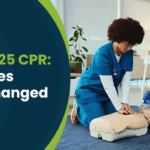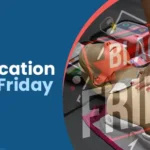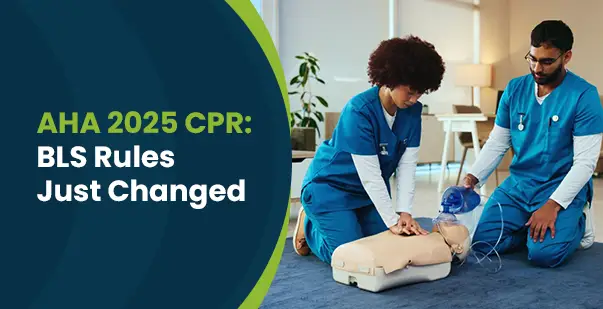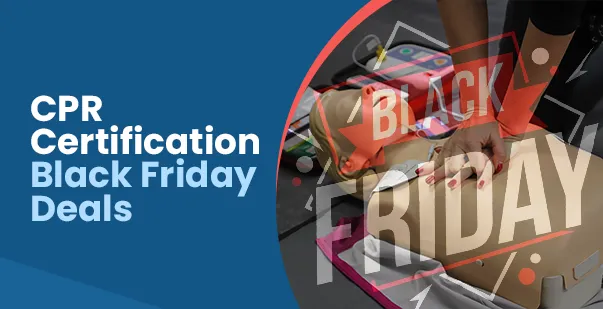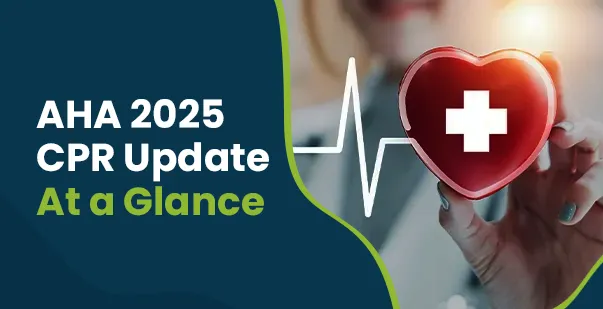The nature of unfortunate events is unpredictable, often occurring unannounced and unexpected. Whether it’s a near-drowning incident or a sudden seizure, a medical emergency can quickly turn a calm moment into a complete disaster. For instance, nearly 47% of sudden cardiac arrests happen before the patient reaches the hospital. Therefore, learning how to save a life by familiarizing yourself with critical techniques becomes paramount. These skills provide you with the confidence and competence to take necessary action in crucial circumstances.
Now, what basic life-saving techniques should you learn? Let’s find out!
What are Life-Saving Skills?
Life-saving skills refer to a set of abilities or techniques that an individual can employ to prevent, recognize, and respond to life-threatening situations or medical emergencies. These skills will help you to learn how to save a life, prevent further harm, and provide the best care until professional medical assistance arrives. Life-saving skills encompass a wide range of knowledge and actions, from CPR to handling choking incidents.
Significance of Learning How to Save a Life
Medical emergencies are common occurrences that can happen every day. However, most people are not familiar with life-saving training. Do you wonder why you should learn how to save a life? Below are some key reasons to acquire life-saving skills.
- Immediate Response- In many emergencies, the first few minutes are crucial in increasing the survival rate. Waiting for professional help can complicate the situation and even result in loss of life. If you possess life-saving skills, you will be able to provide immediate assistance, bridging the gap until professionals arrive.
- Empowerment – When learning how to save a life, hesitance or panic can exacerbate the situation. Possessing these essential skills will empower you to act confidently and decisively in emergencies. The greater your confidence, the more positive the outcomes will be.
- Community impact – When more people in a community are trained in life-saving skills, the entire community will become a safe space. These individuals will be trained to be more cautious and can identify potential hazards, thereby preventing them from occurring.
- Mental and Emotional well-being – Beyond the physical interventions, individuals who are equipped with lifesaving skills can also provide emotional support to the people. Having a calming presence will help you offer reassurance to the victims and take control of the situation, mitigating the psychological impact of the emergency.
9 Basic Life-Saving Skills Everyone Should Learn
You will never know when you will find yourself in an emergency situation. Regardless of the circumstances, you should learn how to save a life. Learning some basic life-saving skills will prepare you for most emergency situations, with the following nine areas being the most important to know.
CPR
Have you ever wondered how to save the life of a victim suffering from a heart attack? Performing CPR (Cardiopulmonary Resuscitation) can make a crucial difference in such circumstances. When the heart stops during cardiac arrest, the CPR technique pumps blood and oxygen to the brain and other vital organs to keep the person alive until emergency support arrives.
Enrolling in proper CPR training and certification courses will help you learn the technique diligently. To perform chest compressions, press on the victim’s chest at least two inches deep at a rate of two compressions per second or 120 compressions per minute. You should continue the compressions without stopping until professional assistance takes over.
The Use of AED
Automated External Defibrillators (AEDs) are important devices for restoring the heart rhythm in cardiac arrest victims. Proper use of AEDs plays a vital role in life-saving intervention if someone is experiencing cardiac arrhythmia that leads to cardiac arrest. AEDs should be performed alongside CPR to ensure the successful revival of the victim. The equipment is quite easy to use and is available in most public facilities across the country.
Bleeding Control Techniques
In certain circumstances, severe bleeding can lead to life-threatening situations if not addressed swiftly. Learning first aid techniques like applying direct pressure, elevating the injured limb, and using pressure dressing can help control bleeding and prevent further blood loss. In addition, you should also learn to identify cases of arterial bleeding, which is characterized by bright red blood sprouting rhythmically, requiring immediate medical intervention.
Managing of Burns
Burns are quite painful and, based on the severity, can lead to severe complications and even loss of life. Moreover, without proper first-aid, burns can leave scars even after the wounds have healed, which affects the lives of victims.
The first aid provided to burn victims should aim to relieve pain. Proper first aid techniques will prevent the spread of burn injuries and speed up the healing process.
Heimlich Maneuver
When a person’s airway is obstructed (choking), air cannot pass through the windpipe (throat) into the lungs, cutting off the flow of oxygen to the brain. Choking can occur due to food or any foreign substance large enough to block the passage. Adults are usually obstructed by food particles, while children often swallow small objects that cause obstruction.
If you want to know how to save a life in such choking incidents, you should learn to perform the Heimlich Maneuver to clear the passage. This skill has an extremely high success rate among both children and adults.
The upward thrust applies pressure on the diaphragm, compressing the chest cavity. This action forces air out of the lungs through the windpipe, dislodging the obstructed object. If you find yourself choking and no one is around to help, you can perform the abdominal thrust on yourself.
Heat Stroke and Hypothermia Recognition
Extreme temperatures can be dangerous. Hypothermia occurs when the body loses heat faster than it can generate it, leading to dangerously low body temperature, shivering, confusion, and fatigue.
On the other hand, heatstroke is the body’s response to prolonged exposure to high temperatures, resulting in symptoms like elevated body temperature, nausea, and rapid pulse. Both conditions require immediate medical attention.
Treatment of Insect and Snake Bites
Outdoor adventures can pose certain dangers, such as insect and snake bites. Knowing how to treat these incidents is crucial for helping anyone in distress. If you or someone around you is bitten by a snake or dangerous insect, move away from the threat and remain calm. Immobilize the affected limb to slow the spread of poison.
Contact emergency responders immediately and wash the bite thoroughly with clean water. Cover it with a cold, clean compress, and keep the bite lower than the heart to slow venom spread in the bloodstream.
Administering Epipen for Allergies
Allergic reactions can range from mild itching to severe anaphylaxis. Hence, when you decide to learn how to save a life, learning to administer an EpiPen is essential. It is quite simple and only involves four basic steps, as below.
- First, hold the pen with your dominant hand and remove the safety cap.
- Position the top toward the thigh at a 90-degree angle.
- Jab the pen into the person’s thigh.
Save from Drowning
Drowning, one of the common causes of accidental death, can occur even in shallow bodies of water. To save a life in such circumstances, you should be aware of the phrase ‘reach, throw, row, go.’ Remembering the following techniques will help you save a person who is drowning.
- Reach: Lie flat on the ground and use a branch or other object to extend your reach to the person.
- Throw: If you find a safety ring nearby, toss it to the victim.
- Row: If necessary, get a boat from the shore to reach the victim.
- Go: As a last resort, swim to the victim to prevent drowning. You can use a towel or t-shirt to help tow them to shore.
How to Apply for Life-Saving Skills Courses?
Today, many individuals show interest in learning basic life-saving skills to expand their journey on how to save a life. If you are one of those, here’s a simple guide to registering for the life-saving course.
- No minimum qualifications required – Lifesaving skills courses on how to save the life, such as first aid and CPR, are open to everyone. These courses do not have any minimum educational requirements. Age is also not a barrier, as even elderly people can register. However, in certain institutions, children below seven and older citizens who lack physical strength may not be eligible to enroll.
- Virtual Classroom – Many organizations offer online life-saving courses, allowing you to learn how to save a life from the comfort of your home or workplace with a proper internet connection.
- Comprehensive Training: After enrolling in the course, you will attend training that includes theoretical knowledge and practical demonstrations. Upon completing the training, you will need to take a test to demonstrate your competence. The digital certificate will be available online and can be printed or delivered to your physical address.
- Recertification process – When you want to know how to save a life, remember that the training requires individuals to refresh their skills every two years. Over time, lack of practice can lead to a decrease in competence in performing life-saving skills in real-world situations.
Life-saving skills: Empowering you to Respond in Emergency Situations
In essence, life-saving skills are invaluable tools that equip you to face unexpected challenges. These skills will not only help you assist victims during emergencies but also empower you to remain composed and act effectively under high-pressure situations. Widespread life-saving knowledge and the application of these skills will enable you to contribute to a safer community and improve overall societal well-being.
